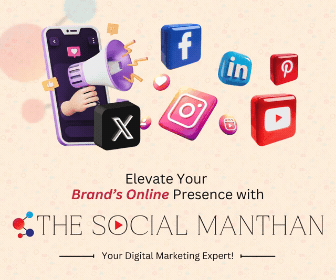Most of us are excited about what the future holds in the digital marketing landscape, especially as we gear up for 2025! As I investigate the top trends that will shape our strategies and help us stay ahead of the competition, I invite you to explore these insights with me. Together, we can prepare to adapt and thrive in a rapidly evolving environment, ensuring your marketing efforts are not just relevant but impactful. Let’s get started and see what’s on the horizon!
Key Takeaways:
- Increased focus on personalization and user experience will shape digital marketing strategies, necessitating brands to tailor content and ads to individual preferences.
- The rise of AI and machine learning technologies will streamline marketing processes, enabling more efficient data analysis and enhanced targeting for campaigns.
- Video content will dominate digital platforms, driving engagement and fostering deeper connections between brands and consumers through interactive formats.
The Rise of AI-Powered Marketing
AI-powered marketing is no longer a niche trend; it’s evolving rapidly into a pivotal component of digital strategies. With machine learning and data analytics at the forefront, brands can now automate processes and derive insights that were previously unimaginable. This evolution empowers businesses to make decisions based on real-time data, optimizing campaigns and enhancing overall efficiency. As I look towards 2025, the integration of AI seems set to redefine how we approach marketing engagement.
How AI is Reshaping Consumer Insights
With AI algorithms analyzing vast amounts of data, understanding consumer behavior has become more precise than ever. These technologies discern patterns in user interactions, preferences, and trends, allowing brands to have a clearer view of their target audience. I can leverage these insights to pinpoint pain points and predict future behaviors, ensuring that marketing strategies are both relevant and timely.
The Role of Personalization in Enhanced Engagement
Personalization is taking center stage as AI enhances how we connect with consumers. By tailoring messages based on individual preferences and past interactions, brands can create more meaningful engagements. This approach not only fosters loyalty but also drives conversions, as customers feel seen and understood in a crowded marketplace.
As we dive deeper into personalization, it’s fascinating to note that 80% of consumers are more likely to make a purchase when brands offer personalized experiences. With AI’s ability to analyze behavioral data, I can pinpoint what resonates with my audience, tailoring emails, recommendations, and ads that align with their personal journey. This level of customization builds trust and sets the stage for a more interactive relationship, transforming mere transactions into lasting connections. Embracing this personalized approach is not just beneficial; it’s becoming important in the competitive digital landscape.
Embracing Voice Search Optimization
Voice search optimization is fast becoming a non-negotiable component of digital marketing strategies. As more users turn to voice-activated technology for information, businesses must ensure their content is accessible and relevant to this growing demographic. I find it fascinating how natural language processing is evolving, prompting marketers to rethink traditional SEO methods and adapt to a more conversational style of content delivery.
The Surge of Voice-Activated Devices
With the surge in voice-activated devices like smart speakers and digital assistants, the way consumers search for information has transformed dramatically. Studies show that over 50% of all online searches will be voice searches by 2025. This change means you must consider how your audience interacts with information differently on these platforms, increasingly favoring concise and straightforward responses.
Adapting Content Strategy for SEO Success
To successfully optimize for voice search, adapting your content strategy becomes necessary. Focus on longer, more natural phrases rather than short keywords, as users tend to phrase their queries in full sentences when speaking. Think about common questions your audience might ask and incorporate them into your content. For example, transforming a title like “Best Running Shoes” into “What are the best running shoes for flat feet?” helps align your content with how people actually speak, which can improve your search visibility significantly.
In a world where convenience and speed matter more than ever, an effective voice search optimization strategy also means creating FAQ sections on your website that directly address common customer inquiries. As voice searches often revolve around finding immediate answers, ensuring your content is structured logically and provides clear, concise information can make all the difference. I recommend using bullet points and lists where appropriate, as these formats are more digestible for voice assistants, enhancing the likelihood of your content being chosen as the top response. Plus, combining this with local SEO practices can significantly elevate your brand’s presence for voice searches, particularly for businesses serving specific geographic areas.
Social Commerce: The New Shopping Frontier
As we step into 2025, social commerce is transforming the way we think about online shopping. With platforms like Instagram and TikTok leading the charge, users can directly purchase products without leaving their favorite social apps. This integration of discovery and action is revolutionizing retail, making it more seamless and engaging than ever. I believe brands that harness this trend will thrive, tapping into customers’ social connections and preferences to drive sales.
The Integration of Social Media and E-Commerce
Social media and e-commerce have become indelibly intertwined, creating dynamic shopping experiences. Features such as shoppable posts, live-streaming sales events, and in-app purchasing options now enable brands to turn social interactions into immediate sales opportunities. I’ve noticed that platforms are increasingly offering advanced targeting tools, allowing businesses to connect with their ideal audience effortlessly. Companies that leverage these integrations will undoubtedly stand out in a crowded marketplace.
Best Practices for Shoppable Content
To maximize the potential of shoppable content, brands should focus on creating engaging, high-quality visuals that tell a story. Authenticity is key; consumers respond better to real, relatable advertising. I suggest incorporating user-generated content and influencer partnerships to build trust and community. Additionally, using clear calls to action will guide your audience through the purchasing process effortlessly, ultimately driving conversions.
In practice, best-in-class shoppable content combines eye-catching visuals with seamless usability. For instance, a lifestyle brand can showcase a product in an aspirational setting on social media. By adding tags linked to a product page, customers can easily click, browse, and purchase without frustration. Additionally, experimenting with interactive elements, such as polls or quizzes, further enhances engagement and can provide necessary insights into consumer preferences, setting your strategy apart from competitors. By embracing these practices, you can effectively ride the social commerce wave into the future.
Sustainability in Marketing: The Eco-Conscious Shift
Embracing sustainability in marketing not only reflects a brand’s values but also resonates strongly with consumers prioritizing eco-friendly practices. In 2025, I anticipate a significant shift as brands integrate sustainable practices into their narratives, promoting their commitment to environmental stewardship. This change not only protects the planet but also builds a deeper connection with customers eager to support businesses that align with their eco-conscious beliefs.
The Growing Demand for Ethical Brands
Consumers increasingly seek brands that reflect their values, with studies showing that 70% of millennials prefer to purchase from ethical companies. This growing demand drives brands to redesign their business strategies, ensuring that sustainability and social responsibility are woven into their core missions. Meeting these expectations can forge stronger relationships with consumers and enhance brand loyalty.
Strategies for Communicating Social Responsibility
To effectively communicate social responsibility, you can utilize storytelling, transparency, and community engagement. Sharing authentic stories about your sustainable practices generates trust and deepens emotional connections with your audience. Clearly displaying certifications, eco-friendly initiatives, and impact reports enhances transparency, showcasing your commitment to a greener future. Engaging your community through partnerships or local initiatives can further solidify your position as a socially responsible brand, creating meaningful engagement and a loyal customer base.
Using storytelling to convey your brand’s social responsibility helps create a narrative that your consumers can relate to. For example, Patagonia is known for its environmental activism and shares stories of how its products benefit the planet. This not only highlights their commitment but also encourages customers to feel part of a larger mission. Incorporating customer feedback and impact metrics into your communication strategy can also strengthen the trust that consumers place in your brand. Regularly sharing updates on your sustainability efforts can keep your audience engaged and demonstrate that you genuinely care about making a difference.
The Evolution of Video Content: More Than Just Entertainment
Video content has matured beyond traditional viewing experiences; it now stands as a fundamental pillar of digital marketing strategies. With attention spans shrinking and audiences hungry for engaging visuals, I find that marketers must prioritize unique storytelling and interactive elements in their video offerings. This shift encourages brands to create meaningful connections with their audience, allowing them not just to consume content but to participate in it.
Live Streaming and Interactive Videos
Live streaming is growing exponentially, offering real-time interactions that foster deeper audience connections. If you leverage platforms like Instagram Live or Twitch, you can engage your audience by answering questions and addressing comments instantly. This creates an authentic atmosphere, significantly enhancing viewer experience and brand loyalty.
Harnessing User-Generated Content for Authentic Connections
User-generated content (UGC) can breathe new life into your marketing strategy. By encouraging your audience to share their experiences with your brand, you tap into authentic storytelling that resonates with potential customers. This approach not only builds trust but also harnesses the creativity of your audience to amplify your brand message.
Diving deeper into user-generated content, I see it as a powerful tool for brands looking to build authenticity and community. Campaigns that spotlight customer images or testimonials generate a 50% increase in engagement, showcasing the persuasive power of real experiences. Think about how brands like GoPro and Starbucks invite and showcase UGC, creating a sense of belonging among their consumers. This strategy fuels engagement, and it’s an evolving trend that I believe will be significant in the digital landscape of 2025.
To wrap up
From above, it’s clear that staying ahead of the top digital marketing trends for 2025 is key to your success. I genuinely believe that embracing innovation and adapting your strategies will help you connect more effectively with your audience. By keeping an eye on emerging technologies and consumer behaviors, you can position yourself for growth and engagement. So, let’s get excited about the opportunities ahead and ensure we’re ready to thrive in the ever-evolving digital landscape!
Q: What are the most significant digital marketing trends expected to emerge in 2025?
A: In 2025, several key digital marketing trends are anticipated to shape the landscape. These include the rise of artificial intelligence (AI) and machine learning tools that offer predictive analytics and personalized content. Additionally, there will be an increased focus on video marketing, particularly short-form video content that caters to mobile consumption. Social commerce is also expected to gain traction, allowing brands to sell directly through social media platforms. Finally, privacy-conscious marketing strategies will be paramount as consumers increasingly demand transparency and control over their data.
Q: How can businesses prepare for the upcoming digital marketing changes in 2025?
A: To get ready for the digital marketing transformations anticipated in 2025, businesses should invest in up-to-date training for their marketing teams on emerging technologies such as AI and automation tools. Developing a robust content strategy that includes a focus on video formats becomes important, as well as enhancing social media engagement to drive conversions through social commerce. Furthermore, brands should start implementing privacy-focused practices in their data handling processes to align with evolving consumer expectations and regulatory standards.
Q: What role will data privacy play in digital marketing strategies by 2025?
A: Data privacy is set to become a pivotal aspect of digital marketing strategies by 2025. As regulatory frameworks tighten and consumer awareness regarding data security escalates, businesses will need to prioritize transparency about how they collect and use customer data. Marketers will have to adopt more ethical tactics to earn trust, such as clear opt-in practices and easy-to-understand privacy policies. This emphasis on ethical marketing will not only safeguard brands against potential legal repercussions but also foster a deeper connection with their audience, ultimately leading to increased customer loyalty.








